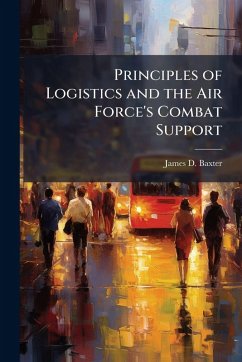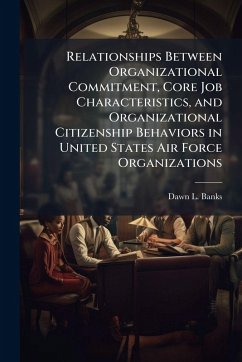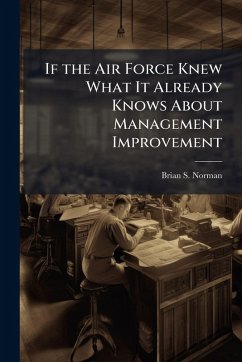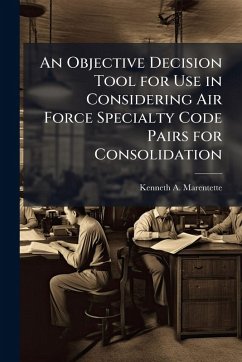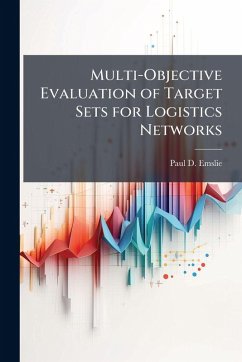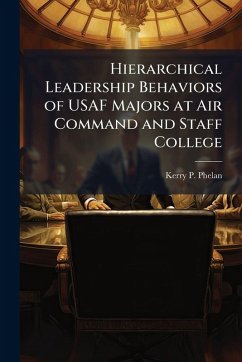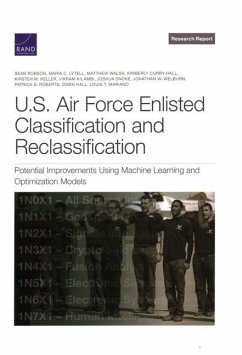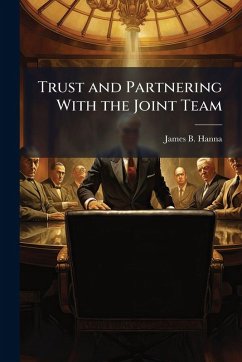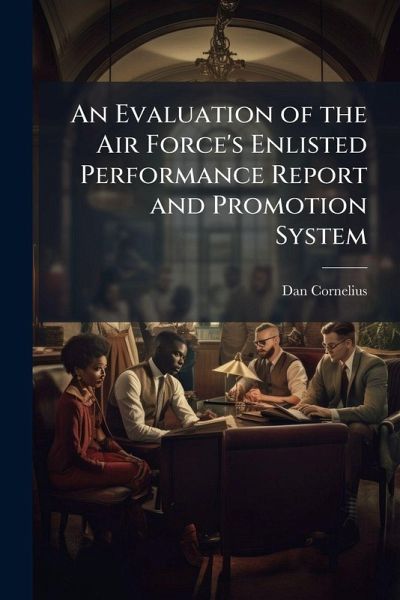
An Evaluation of the Air Force's Enlisted Performance Report and Promotion System
Versandkostenfrei!
Versandfertig in über 4 Wochen
14,99 €
inkl. MwSt.
Weitere Ausgaben:

PAYBACK Punkte
7 °P sammeln!
Inflation of the "Overall Performance Assessment" given on the Air Force's Enlisted Performance Report's (EPR) has made duty performance virtually irrelevant when selecting Airmen to serve in the non-commissioned (NCO) and senior non-commissioned (SNCO) ranks. That EPR inflation exists is not disputed; the Air Force has struggled with it for years. Despite revisions to the evaluation form and multiple statements by current and former Chief Master Sergeants of the Air Force (CMSAF), inflation not only persists, it is getting worse. The majority of Airmen competing for promotion to E-5 through E...
Inflation of the "Overall Performance Assessment" given on the Air Force's Enlisted Performance Report's (EPR) has made duty performance virtually irrelevant when selecting Airmen to serve in the non-commissioned (NCO) and senior non-commissioned (SNCO) ranks. That EPR inflation exists is not disputed; the Air Force has struggled with it for years. Despite revisions to the evaluation form and multiple statements by current and former Chief Master Sergeants of the Air Force (CMSAF), inflation not only persists, it is getting worse. The majority of Airmen competing for promotion to E-5 through E-9 earn perfect EPR scores within the Weighted Airman Promotion System (WAPS). As a result, there is very little differentiation among those competing for promotion significantly diminishing the impact of performance. To gain insight on options to address inflation, I review selected methods employed by the Army, Navy, and Marine Corps and highlight their advantages and disadvantages. This work has been selected by scholars as being culturally important, and is part of the knowledge base of civilization as we know it. This work was reproduced from the original artifact, and remains as true to the original work as possible. Therefore, you will see the original copyright references, library stamps (as most of these works have been housed in our most important libraries around the world), and other notations in the work. This work is in the public domain in the United States of America, and possibly other nations. Within the United States, you may freely copy and distribute this work, as no entity (individual or corporate) has a copyright on the body of the work. As a reproduction of a historical artifact, this work may contain missing or blurred pages, poor pictures, errant marks, etc. Scholars believe, and we concur, that this work is important enough to be preserved, reproduced, and made generally available to the public. We appreciate your support of the preservation process, and thank you for being an important part of keeping this knowledge alive and relevant.



